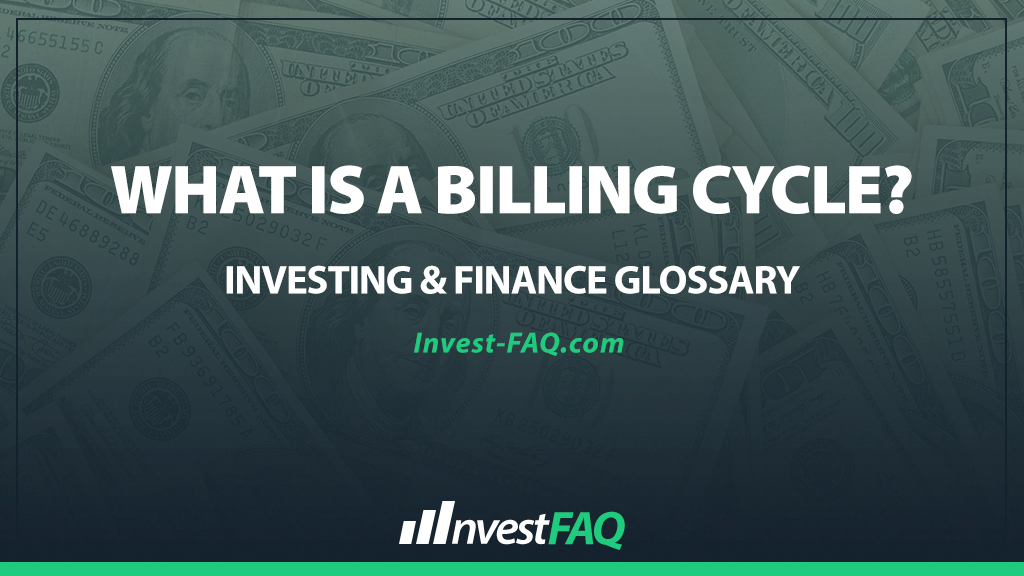
Billing Cycle
Contents
A billing cycle is the interval of time from the end of one billing statement date to the next billing statement date, typically lasting from 20 to 45 days, depending on the service provider or lender’s policy.
This term is commonly used in credit card services, utilities, and subscription-based services to define the period for which charges are compiled and a bill is generated for the customer.
In business, managing billing cycles efficiently is crucial for cash flow management, customer satisfaction, and operational efficiency.
Businesses structure billing cycles to ensure timely invoicing and payment collection, aligning with their operational needs and customer expectations.
Understanding and optimizing billing cycles can help businesses improve their liquidity by shortening the time between providing a service or product and receiving payment.
Example of a Billing Cycle
Let’s consider “Premium Web Hosting Services,” a company that provides web hosting services on a subscription basis. It operates on a monthly billing cycle, starting on the first day of each month and ending on the last day of the same month.
For a customer who subscribes on January 15, the first billing cycle would cover January 15 to January 31, with subsequent cycles running from the first to the last day of each month.
In its accounting records for January, Premium Web Hosting Services would record:
Accounts Receivable (Asset): Increase, reflecting the amount billed to the customer for the service provided from January 15 to January 31.
Service Revenue (Income): Increase, matching the amount billed, recognizing the revenue earned during the partial month of service.
In this scenario, the partial billing cycle allows Premium Web Hosting Services to start recognizing revenue from new customers immediately, rather than waiting for a full month’s service to be provided.
This practice improves the company’s cash flow by allowing for sooner billing and collection, and it provides a prorated bill to the customer for the first month, aligning charges with the actual service period.
Significance for Investing & Finance
The concept of a billing cycle is significant in accounting for several reasons:
Revenue Recognition: It aids in the accurate timing of revenue recognition, ensuring that income is recorded in the correct accounting period as services are rendered or products are delivered.
Cash Flow Management: Efficient billing cycle management helps businesses maintain healthy cash flows by reducing the time between providing services and receiving payments.
Customer Relations: Clearly defined billing cycles contribute to transparency in billing practices, enhancing customer satisfaction and trust in the business.
Operational Efficiency: Regular and predictable billing cycles streamline invoicing and collection processes, reducing administrative burdens and enhancing overall operational efficiency.
In summary, a billing cycle plays a pivotal role in the financial and operational management of a business. By structuring and managing billing cycles effectively, businesses can ensure timely revenue recognition, maintain healthy cash flows, foster positive customer relationships, and achieve operational efficiencies.
FAQ
How does the length of a billing cycle affect a company’s cash flow?
A shorter billing cycle can improve a company’s cash flow by reducing the time between delivering services or products and receiving payments, thereby ensuring more frequent cash inflows.
Can a customer request a change in their billing cycle, and how might this affect accounting processes?
Yes, customers can often request a change in their billing cycle, and while accommodating such requests can enhance customer satisfaction, it may require adjustments in accounting processes to ensure accurate revenue recognition and billing management.
What impact does billing cycle optimization have on customer retention?
Optimizing billing cycles to align with customer preferences and payment capabilities can significantly enhance customer satisfaction and retention by providing a more personalized and convenient billing experience.
How do businesses determine the most effective billing cycle length for their operations?
Businesses determine the most effective billing cycle length by considering factors such as the nature of the service or product, cash flow needs, operational costs, and customer preferences, aiming to balance operational efficiency with customer satisfaction.
